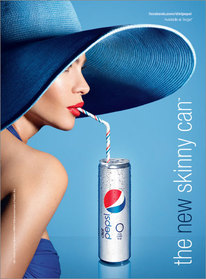
How refreshing.
When watching television or browsing online, one can hardly go a few minutes without being bombarded with advertisements hailing the newest weight-loss program or “lite” energy drink. Not surprisingly, these advertisements reflect the persistent influence of the media on female body image.
As a girl, I am no stranger to the brashness of the media when it comes to dictating how I should look. The most frustrating part of this section of our culture, is the unrealistic appearances of professional models and actresses, each with their own team of stylists, whose only job is to make them look beautiful. Now, I have nothing against the way these women look, only with the pressure they put on women to look and act the way they do. Although, in comparison, I would have to admit, that from an outsider’s view, Korean women (and men) are held to even higher expectations when it comes to their bodies. I am actually quite thankful for the diversity of American stars and celebrities, as compared to idols in Korea.
As a girl, I am no stranger to the brashness of the media when it comes to dictating how I should look. The most frustrating part of this section of our culture, is the unrealistic appearances of professional models and actresses, each with their own team of stylists, whose only job is to make them look beautiful. Now, I have nothing against the way these women look, only with the pressure they put on women to look and act the way they do. Although, in comparison, I would have to admit, that from an outsider’s view, Korean women (and men) are held to even higher expectations when it comes to their bodies. I am actually quite thankful for the diversity of American stars and celebrities, as compared to idols in Korea.
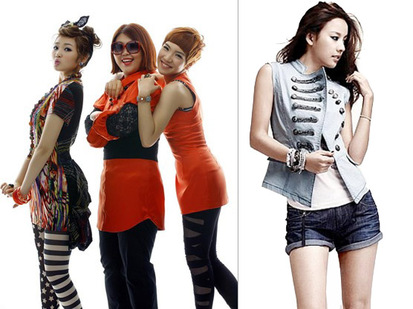
For example in the United States, although most fashion models are tall and thin, many of the women who are considered to be some of the most beautiful in the world are “curvy”—Kim Kardashian, Christina Hendricks, etc. There is also a wide range of hair cut and colour, height, and—very importantly— skin tone.
In Korea, and other East-Asian countries like China and Japan, this range is restricted to only a few types of women. Few female Korean celebrities weigh over 55 kg, and if they do happen to have a little extra weight, the risk of being labeled “fat” is almost guaranteed. In fact, a Korean pop girl-group even attempted to change this set negativity surrounding bigger bodies. Park Ji Eun, one of the girls in the group, called the Piggy Dolls, said in an interview, “When we first auditioned, there were three conditions. First, we had to be talented vocally. We also could not have had any plastic surgery done, and we had to weigh over 70kg.” Unfortunately for the Dolls, their initial popularity was pretty low, even for a newly formed group. Though no one can say for sure if they just lacked talent, or if their image was not mainstream enough, here’s the real kicker: after they failed to receive much attention, all three of them “coincidentally” lost almost 20kg each. And now let’s compare, on the right, currently one of the most famous singer’s in Korea, Lee Hyori, often praised for her slender figure. On the left, the new and “improved” Piggy Dolls.
In Korea, and other East-Asian countries like China and Japan, this range is restricted to only a few types of women. Few female Korean celebrities weigh over 55 kg, and if they do happen to have a little extra weight, the risk of being labeled “fat” is almost guaranteed. In fact, a Korean pop girl-group even attempted to change this set negativity surrounding bigger bodies. Park Ji Eun, one of the girls in the group, called the Piggy Dolls, said in an interview, “When we first auditioned, there were three conditions. First, we had to be talented vocally. We also could not have had any plastic surgery done, and we had to weigh over 70kg.” Unfortunately for the Dolls, their initial popularity was pretty low, even for a newly formed group. Though no one can say for sure if they just lacked talent, or if their image was not mainstream enough, here’s the real kicker: after they failed to receive much attention, all three of them “coincidentally” lost almost 20kg each. And now let’s compare, on the right, currently one of the most famous singer’s in Korea, Lee Hyori, often praised for her slender figure. On the left, the new and “improved” Piggy Dolls.

S is for sexy.
Strangely enough, while most idols tend to be on the very thin side of the scale, the hot new body type in Korea involves “curves”. Now, when I say “curves”, I don’t mean the curves of the woman in the center of the Piggy Dolls photo, and definitely not "American-style" curves a la Miss. Hendricks—I mean seriously, she would be a whale by Korean standards. The curves I'm referring to are so subtle that during my research (aka oogling photos of Korean celebrities for a few hours) my untrained eye couldn't distinguish an average figure from the elusive curvy one. Honestly, most of the women’s bodies appeared very slight in frame and slender in weight; the only curves I could make out were in photos where the girl was intentionally arching her back and jutting out her chest, as shown to the left.
This brings us to another phenomenon unique to Korean popular culture, body lines. Featured above is the “s-line”, or the s-shape made when following the form of a woman’s backside to her chest. Other notable “lines” include the x-line (chest, waist, hips), m-line (abs, used for men), and the ever-popular v-line (a narrow, pointed chin, and sometimes used for the “v” between breasts). Since there are over 20 different lines to describe the male and female forms, there will most likely be a whole 'nother post dedicated to the craze, and the advertising that has evolved along side it.
This brings us to another phenomenon unique to Korean popular culture, body lines. Featured above is the “s-line”, or the s-shape made when following the form of a woman’s backside to her chest. Other notable “lines” include the x-line (chest, waist, hips), m-line (abs, used for men), and the ever-popular v-line (a narrow, pointed chin, and sometimes used for the “v” between breasts). Since there are over 20 different lines to describe the male and female forms, there will most likely be a whole 'nother post dedicated to the craze, and the advertising that has evolved along side it.
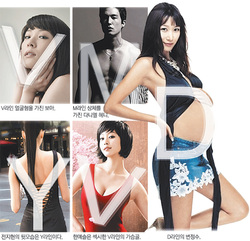
There are literally dozens of facets related to beauty standards in both Korea and America, and since I hope to do justice to each one, I won't waste time trying to skim over each topic. So stay tuned for upcoming posts on:
-The desire to be tan in America vs the desire to be fair in Asia
-Facial beauty-Is caucasian the ideal?
-Korean body lines in advertising
and the controversial....
-plastic surgery
-The desire to be tan in America vs the desire to be fair in Asia
-Facial beauty-Is caucasian the ideal?
-Korean body lines in advertising
and the controversial....
-plastic surgery
See you next week for a dissection of the rest of the human body! (Not literally. Well maybe just a smidgen.)
-es
-es
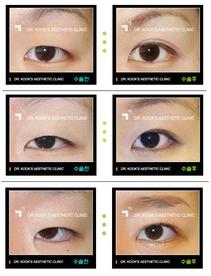
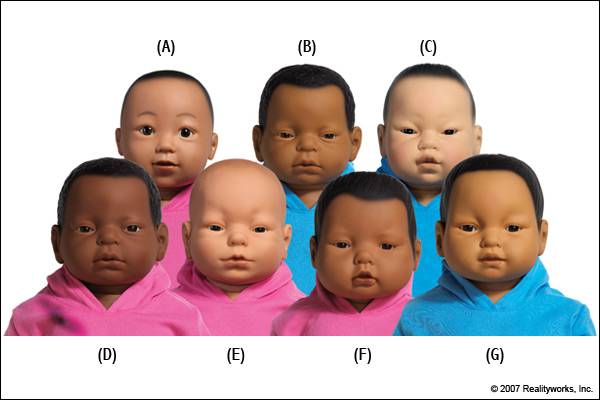
 RSS Feed
RSS Feed